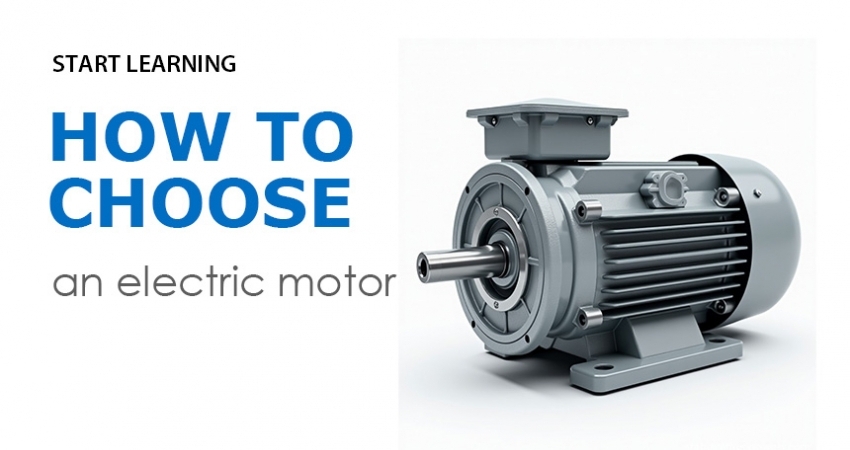Motor Power, The Key to Choosing the Right Motor!

Motors play an indispensable role in modern industry and daily life. From conveyor belts on factory production lines and air conditioning system compressors to small motors in household appliances, we rely on motor drive power for operation. Among the many motor specifications, motor power is one of the most crucial selection criteria. Choosing a motor with appropriate power not only ensures proper equipment operation but also achieves optimal energy efficiency. This article will introduce you to motor power calculation methods and how to select suitable motors based on actual requirements.
〈Read more:Choosing Motor Basics: Types of AC Motors & DC Motors〉
〈Read more:Machine Optimization Through Small Reduction Motors〉
〈Read more:What are Sesame Motor's advantages?〉
[Contact Sesame Motor Now]
What is Motor Power?
Motor power refers to the mechanical energy that a motor can output per unit time, typically measured in watts (W) or horsepower (HP). Appropriate motor power is crucial for equipment operation: insufficient power leads to motor overload and shortened lifespan, while excessive power results in energy waste and increased operating costs. Choosing the right motor power ensures normal equipment operation, achieves optimal energy efficiency, reduces electricity costs, and extends equipment life.〈Read more:Choosing Motor Basics: Types of AC Motors & DC Motors〉
What are the Types of Motor Power?
Rated Power
Rated power refers to the maximum continuous power output of a motor under standard operating conditions (such as normal temperature, rated voltage, and frequency). This value is typically displayed on the motor nameplate and is an important reference when purchasing motors.Actual Power
Actual power is the output power of the motor in real operating conditions, affected by factors such as temperature, load variations, and voltage fluctuations, typically lower than the rated power. Understanding actual power helps evaluate the motor's real performance.How to Calculate Motor Power?
The basic formula for motor power calculation is: Power (watt) = 1.027 (constant) x Torque (kg.m) × Speed (rpm). However, in actual operation, energy losses occur due to factors such as friction and heat generation, so motor efficiency must be considered. The actual output power will be lower than the input power due to these losses.What is Motor Efficiency? How Does it Affect Motor Power?
Motor efficiency is the ratio of output power to input power, typically expressed as a percentage. Higher efficiency indicates less energy loss. The formula for calculating motor efficiency is Efficiency = (Output Power ÷ Input Power) × 100%. For example, if a motor's input power is 1000W and output power is 800W, its efficiency is 80%. Understanding motor efficiency is crucial for evaluating actual operating costs and energy consumption, and is an important factor when selecting motors.How to Choose the Right Motor Based on Motor Power?
Load Requirements
When selecting a motor, first analyze the equipment's actual load requirements. This includes maximum load at startup, average load during continuous operation, and load variation range. It's recommended to choose a motor with rated power slightly higher than the maximum load requirement to ensure sufficient power margin, but not excessively high to avoid waste.Operating Environment
The actual output power of motors is affected by environmental factors. In high-temperature environments, motor heat dissipation decreases, potentially requiring load reduction. In high-altitude areas, lower air density also affects heat dissipation. Therefore, actual operating environmental conditions must be considered when selecting motors.Efficiency Considerations
While high-efficiency motors have higher initial purchase costs, they can significantly save electricity costs during long-term operation. When calculating return on investment, factors such as motor efficiency, expected operating hours, and local electricity rates should be considered to choose the most economically beneficial solution.〈Read more:Machine Optimization Through Small Reduction Motors〉
AC Motors & Gear Motors Supplier - Sesame Motor Corp.
Sesame Motor is an ISO9001 and ISO14001 certified company offering UL, CE, CCC certified power transmission products. SESAME AC motors, gear motors and speed reducers have been sold in more than 50 countries around the world. Over the past decades, Sesame Motor has continued to build its own R&D, processing and manufacturing capabilities, increased key-components self-made rate to 90%. We provide customized or OEM services according to customer needs, 100% made in Taiwan. SESAME small AC motors, gear motors and high-efficiency motors are available in various sizes and specifications with stable quality and performance, and can meet customers' all-round applications from basic power transmission to production line automation.〈Read more:What are Sesame Motor's advantages?〉
Conclusion
Choosing appropriate motor power is key to ensuring proper equipment operation. Only by understanding motor power types, calculation methods, and considering actual operating environment and efficiency factors can you select the most suitable motor. In case of any issues when purchasing motors or need professional advice, contact Sesame Motor for the most appropriate solutions.[Contact Sesame Motor Now]
